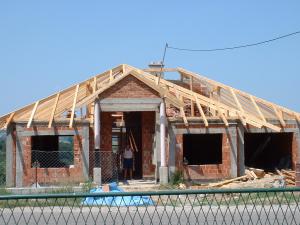Common Financial Mistakes: Not Setting Aside 20%
If you're building a home for the first time, congratulations! The construction period can be one of the most exciting time periods in any person's life, as he or she dreams of living in the final product, a home completely built around preference. However, the construction period can also be a nightmare, what with choice upon choice and deadline upon deadline to deal with. And those choices and deadlines often come with a hefty price, above and beyond the construction estimate. For that reason, it's important to plan for the extra costs that may not have been disclosed when you entered the construction agreement, also known as the construction variance.
What is the Construction Variance?
In construction, contractors can run into unforeseeable problems quite often. Maybe the ground is unexpectedly hard, and it pushes back digging the basement. Maybe it storms for weeks on end, and the construction is stalled. Whatever problems (weather-related and otherwise) that the contractor runs into, the issues will often push back the total build schedule and throw estimates for equipment rental out the window.
While this can be annoying, it can also be quite costly for you. As the property owner, you could be paying tens of thousands of dollars more than first expected. Additionally, other decisions could increase the cost, like a last-minute change from tiled floors to hardwood.
When all of these additional costs are put together, you end up paying more than originally estimated. This is where the construction variance comes in: it's often smart to account for the unexpected by holding some extra cash or loan value aside to cover these additions.
How Much Should I Hold?
A smart percentage to hold as a construction variance is 20% of the construction's estimate. This may seem high at first, but these fees can add up quickly; a simple upgrade in kitchen cabinets could cost $5,000 easily, and when you add in other costs, it's easy to total tens of thousands of dollars.
Depending on your area and the home you plan to build, though, your lender may suggest you hold a higher or lower variance amount. Discuss your options with your lender, realtor and the construction company, any of whom may be able to give you an idea on past performance in the local construction industry. When in doubt, it's never a bad idea to have too much cash on hand – rather than too little.
Being prepared for construction costs and variances on your new home can make the construction process much less painful than it could be. When all is said and done (and the house is built), moving day should be one of joy rather than one of sinking debt.
- Login to post comments
-







MoneyCone wrote:
Tue, 02/28/2012 - 14:28 Comment #: 1That is interesting! Never having constructed a house before I always thought the price point was fixed before hand. 'Guess I was wrong!
Christa Palm wrote:
Tue, 02/28/2012 - 21:12 Comment #: 2MoneyCone, it depends on the construction company and how they run things, but when I worked in mortgage, customers were often surprised by the final total. That being said, many cookie cutter developments will stick to a set amount. It all depends, but it's never a bad idea to have too much cash on hand!